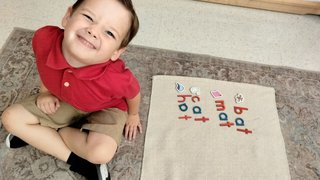Car seats, cribs, and more: Safety tips for top infant products
February 1, 2022

When you’re expecting a baby, friends and loved ones will have plenty of advice about “must-have” baby registry items. Some may even offer hand-me-down products and devices that helped them navigate their own new parenthood journeys.
While well-meaning, it’s important to know whether those baby products are still considered safe before you use them. For instance, hundreds of infants die each year due to sleeping in sitting devices, such as a car seat or stroller that is not designed for sleeping.
This doesn’t mean you should avoid all second-hand baby products. However, parents should familiarize themselves with established safety standards, rather than simply accepting passed-down products or following advice from their favorite influencer.
The Consumer Product Safety Commission (CPSC) is a great resource, as is your baby’s health care provider or pediatrician. Here are some safety guidelines for five common devices for parents of newborns.

1. Car seats
A car seat is one of the few products you must have to keep your baby safe. In fact, you can’t leave the hospital after delivery without one.
While your infant will nap in the car at times, these devices are designed for transporting your child not long periods of sleep. But some observational studies have shown they are often used as sleep alternatives to a crib or bassinet.
Resist that urge, because the angle of a car seat on the ground is different from the angle in a vehicle. The change in positioning can stress your newborn’s ability to breathe properly. In some instances, babies have suffocated. So, take your baby out of the car seat when you aren’t in a vehicle.
If you’re planning to borrow a car seat or purchase a used one, keep two things in mind:
- Car seats have an expiration date; repeated use can weaken the seat’s durability and safety. The date should be listed on the back or bottom of the car seat and usually is 6-10 years from the manufacture date.
- A car seat that went through a car accident should not be reused. Even if you don’t see any damage, the quality of the materials likely has diminished. Ensure your secondhand seat is accident-free and hasn’t been recalled. The National Highway Traffic Safety Administration website lists recalled car seats.
Finally, be sure to follow your car seat’s weight and height limits, particularly for newborns.
Once you’ve decided on a car seat, installation can be tricky. Children’s Health offers free car seat checks that only take 30 minutes and are open to anyone, so be sure to make an appointment to learn how to properly install the car seat and securely strap in your newborn.

2. Cribs and other sleeping surfaces
Before you start searching for the perfect crib, you should know an elaborate crib is not necessary. All your baby needs for safe, restful sleep is a dedicated, firm, flat surface – as long as it’s not directly on the floor or in bed with you.
A bassinet, bedside sleeper, or Pack ‘n Play will do just fine. Check that it has a Children’s Product Certificate and hasn’t been recalled before purchasing – even if a friend swears by it. For example, the Fisher-Price Rock ‘n Play was recalled in 2019 for safety reasons, even though it was very popular and advertised as a sleeper.
Newborns need a firm sleeping surface – one you might find uncomfortable yourself. They should not be surrounded by anything during sleep, including pillows, blankets, and stuffed animals.
If you plan to use a crib, avoid styles with these features, which are proven unsafe:
- Bumper pads: Commonly found in bedding sets, bumper pads line the crib between the mattress and side rails. However, a baby can suffocate if they roll against the pads.
- Drop-side design: These cribs have one side that can be lowered to ease access to the baby. However, the drop mechanisms create a gap between the mattress and crib, which can result in injury or death for a sleeping infant who rolls into it. Sales have been banned in the U.S., but you might come across a used one.
Related reading: 5 baby room-sharing tips to reduce the risk of injury and SIDS
3. Strollers
Strollers aren’t necessary for newborns, but they come in handy if you and your family plan to be active soon after the baby is born. Keep these guidelines in mind:
- Newborns need a stroller that can fully recline because they can’t support their head and neck in an upright position until they’re a few months old.
- Consider a bassinet stroller, which allows babies to lie flat in a detachable bassinet.
- Don’t let your baby roll around in the stroller; if there’s a lot of space, fill in the gaps with rolled-up blankets.
- Get a stroller with a five-point harness – it includes straps for the shoulders and between the legs in addition to a waist belt.
Never hang bags or heavy items on the handles of the stroller to prevent falls or tipping over.
Related reading: Postpartum exercise: When it's safe to start running and lifting after pregnancy
4. Wraps and slings
Baby wraps and slings provide a safe, hands-free way for you to carry your infant. These large pieces of wearable fabric are particularly helpful for parents who have disabilities or need to multitask. Wearing your baby also can help reduce crying and improve bonding.

I found wraps to be the easiest and most efficient way to carry my infant daughter – especially while chasing around my son, who was 4 at the time. For the safest babywearing experience:
- Abide by the product’s age and weight requirements.
- Don’t wear your baby on your back until he or she is several months old with stronger head and neck muscles.
- Position your infant up high on your chest and secure them tightly.
- Practice tying and wearing your wrap multiple times before using it with your baby. The fabric has to be tied in a very specific way to support their body, especially their head and neck; follow the manufacturer's instructions. I learned how to use mine by watching a YouTube video.
- Don’t cover your baby’s face with the fabric or press their face against your body; this can cause them to suffocate.
- Ensure your infant’s legs are spread wide, not hanging straight down.
- Never cook while wearing your newborn. The risk of burns or injuries is high.
Related reading: Newborn care tips for parents with disabilities
5. Bouncers, rockers, and swings
Sitting devices can help soothe a fussy baby and give you a much-needed break. Whether powered by the baby or batteries, the constant movement can comfort an infant.
However, bouncers, rockers, and swings are not a necessity – and they’re not designed for sleeping. Never leave an infant alone in a sitting device, and don’t let the baby sleep in one for more than a few minutes. CPSC also recommends these products be used on the floor only, with the provided straps and restraints. And always follow the weight restrictions.
Thoroughly review recalled devices and safety standards for your brand of bouncer seat or swing before buying or accepting one.
The bottom line with any infant device is to find the safest product that works best for your family – and always ask your pediatrician if you have questions. There’s a lot to learn as a parent, and we’re happy to help fill in the gaps.
To visit with a pediatrician, call 214-645-8300 or request an appointment online.












